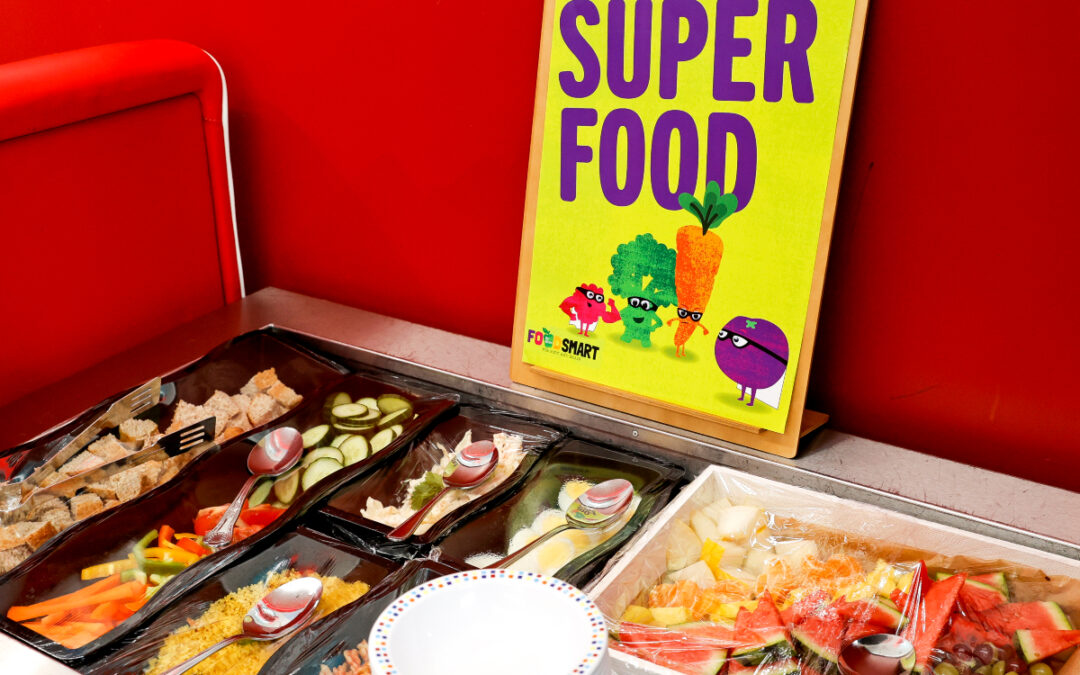Healthy school lunches are more than just a midday meal; they provide essential nutrition for pupils’ development and well-being. Understanding the science behind school lunches is crucial for parents, school heads, caterers, and policymakers in setting standards that ensure every child receives the nutrition they need
Nutritional Science of Healthy School Lunches
A schoolchild’s daily diet should include the right balance of macronutrients, micronutrients, and hydration to support both physical and mental functions.
Macronutrients
These are the main components of food that provide the energy needed for movement and daily activities.
Proteins
Protein sources, both animal (meat, dairy, fish, eggs) and plant-based (legumes, soya products, grains, nuts, seeds), supply essential amino acids, vitamins E and B, zinc, iron, and magnesium. Proteins are vital for tissue recovery and repair, stamina, concentration, growth, and a strong immune system. Schools should prioritise foods rich in protein, such as milk, eggs, lean meats, fish, beans, tofu, nuts, and seeds.
Carbohydrates
Carbohydrates are the primary energy source in the diet and should be consumed in larger quantities. These include grains, fruits, legumes, and vegetables. Common sources are rice, bread, pasta, noodles, potatoes, yams, and cereals. Carbohydrates are classified as ‘simple’ or ‘complex’ based on how quickly their sugars are absorbed into the bloodstream, measured by the Glycemic Index (GI). High-GI foods release glucose rapidly, while low GI foods provide a slow, steady energy release.
- Simple Carbs (High GI): Refined sugars and starches found in white bread, white rice, crackers, cookies, cakes, doughnuts, breakfast cereals, fizzy drinks, fruit concentrates, syrups, and crisps.
- Complex Carbs (Low GI): Whole grains, beans, oats, nuts, bran flakes, corn, rice, peas, vegetables, and fruits. These are rich in fibre and contain resistant starches. School meals should focus on complex carbs to provide children with sustained energy.
Fats
Fats aid in vitamin absorption, organ protection, and cell growth. The healthiest fats are unsaturated and polyunsaturated. Unsaturated fats are found in fish, plant-derived oils, nuts, and seeds. Polyunsaturated fats include omega-3 and omega-6, also known as essential fatty acids. Omega-3 is abundant in oily fish like salmon, sardines, mackerel, trout, herring, pilchard, and shellfish. Omega-6 is found in foods like sunflower seeds, tofu, avocado, peanut butter, eggs, almonds, cashews, and walnuts.
Micronutrients
Micronutrients, including vitamins and minerals, are essential in small amounts for metabolism, immunity, and tissue function. These nutrients often work together to maintain overall health.
Vitamins
Vitamins are classified into two types: water-soluble (vitamin C and B vitamins) and fat-soluble (vitamins A, D, E, and K). Unabsorbed water-soluble vitamins are expelled by the body, while fat-soluble vitamins are stored in the liver and fat tissues. Water-soluble vitamins are found in fruits, vegetables, grains, and dairy, while fat-soluble vitamins are present in animal fats, vegetable oils, dairy foods, and oily fish.
Minerals
Dietary minerals are crucial for building strong bones and teeth, maintaining cellular fluids, and converting food into energy. These include calcium, iron, zinc, iodine, phosphorus, magnesium, sodium, potassium, fluoride, and selenium. A variety of minerals are found in meat, fish, cereals, dairy, nuts, and fruits and vegetables.
Hydration
Water isn’t just for hydration but also for carrying micronutrients, trace elements and electrolytes. Water supplies 20% of the daily recommended intake of calcium and magnesium. Schools should provide children with safe drinking water at all times. Food catering for schools should include still or carbonated water, low-fat milk, natural fruit/vegetable juice (45%), tea, and coffee with less than 5% added sugars or honey.
Building a Healthy School Lunch: Key Components
A balanced school lunch should include:
- Fruits and Vegetables: Visually appealing and flavourful options like stir-fries, roasted vegetables, salads, fruit cups, juices, and smoothies encourage children to enjoy eating them.
- Whole Grains: Rich in fibre, vitamins, minerals, and antioxidants, whole grains are more filling and nutritious than refined grains.
- Lean Proteins: Opt for lower-fat options like chicken, turkey, and fat-trimmed meats.
Portion Control and Balance
School meals should combine the right portions of carbohydrates, proteins, and fats, with an emphasis on fruits and vegetables. Portions should be satisfying but not wasteful.
The Impact of Healthy School Lunches
Studies have shown there are numerous benefits of healthy school meals.
Cognitive and Academic Benefits
Nutrition is a vital modulator for brain development. Brain development is related to higher cognitive function. Higher cognitive function is related to better academic performance. School meals overall have a positive impact on academic performance.
Physical Health Benefits
Healthy school meals play a vital role in reducing childhood obesity and Type-2 diabetes, two of the most common health challenges facing UK children. By providing balanced nutrition, children thrive during their school years, boosting their ability to focus and actively participate in their learning and play.
Social and Emotional Well-being
According to pioneering 2021 research by the University of East Anglia, children who eat more fruit and vegetables daily display better mental well-being. The communal eating characteristics of school meals encourage social interaction. Healthy school meals promote healthy food habits that last well into adulthood.
At AiP, we’re guided by science
Our approach to healthy meals is based on years of research and our evolving understanding of nutrition. The evidence is clear: nutritionally balanced school meals provide children with the foundation for a healthy and fulfilling life.
Alliance in Partnership collaborates with the British Nutrition Foundation to ensure our chefs are trained with the latest, scientifically-backed information. Our nutritional standards exceed the Government’s School Food Standards. We’ve crafted innovative menus that rotate regularly to cater to every age group. Our digital solutions make pre-ordering simple, efficient, and transparent. To bring the AiP experience to your school reach out to us.
